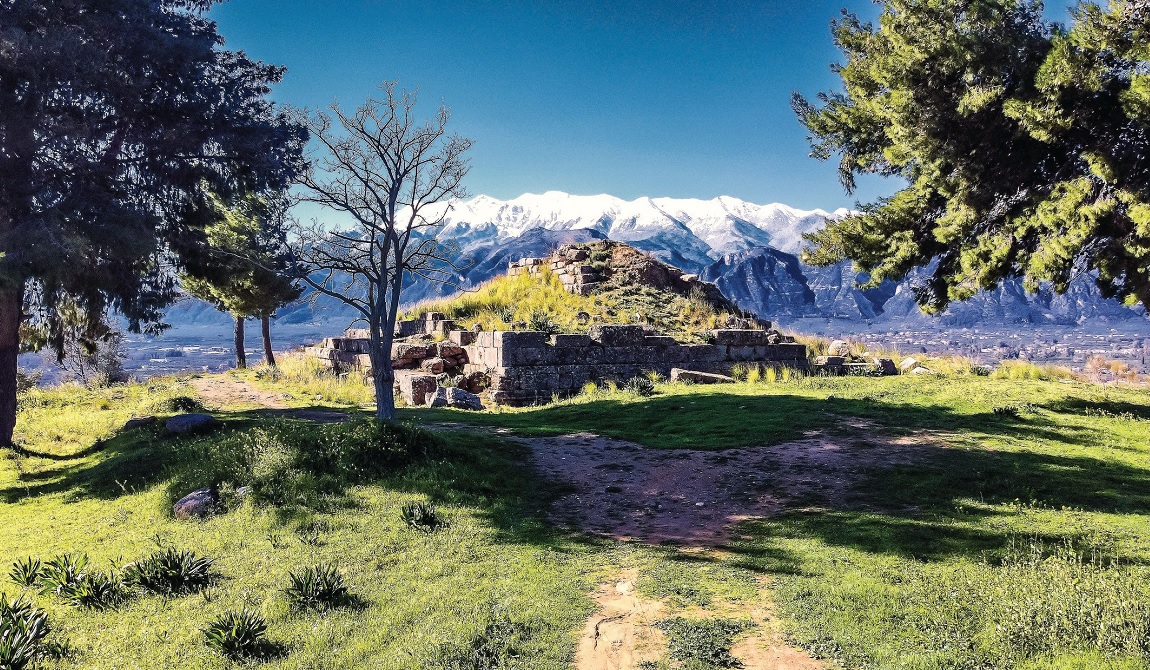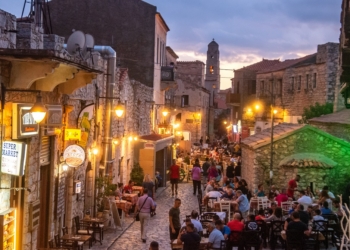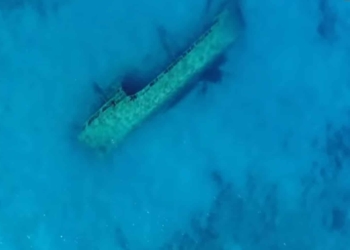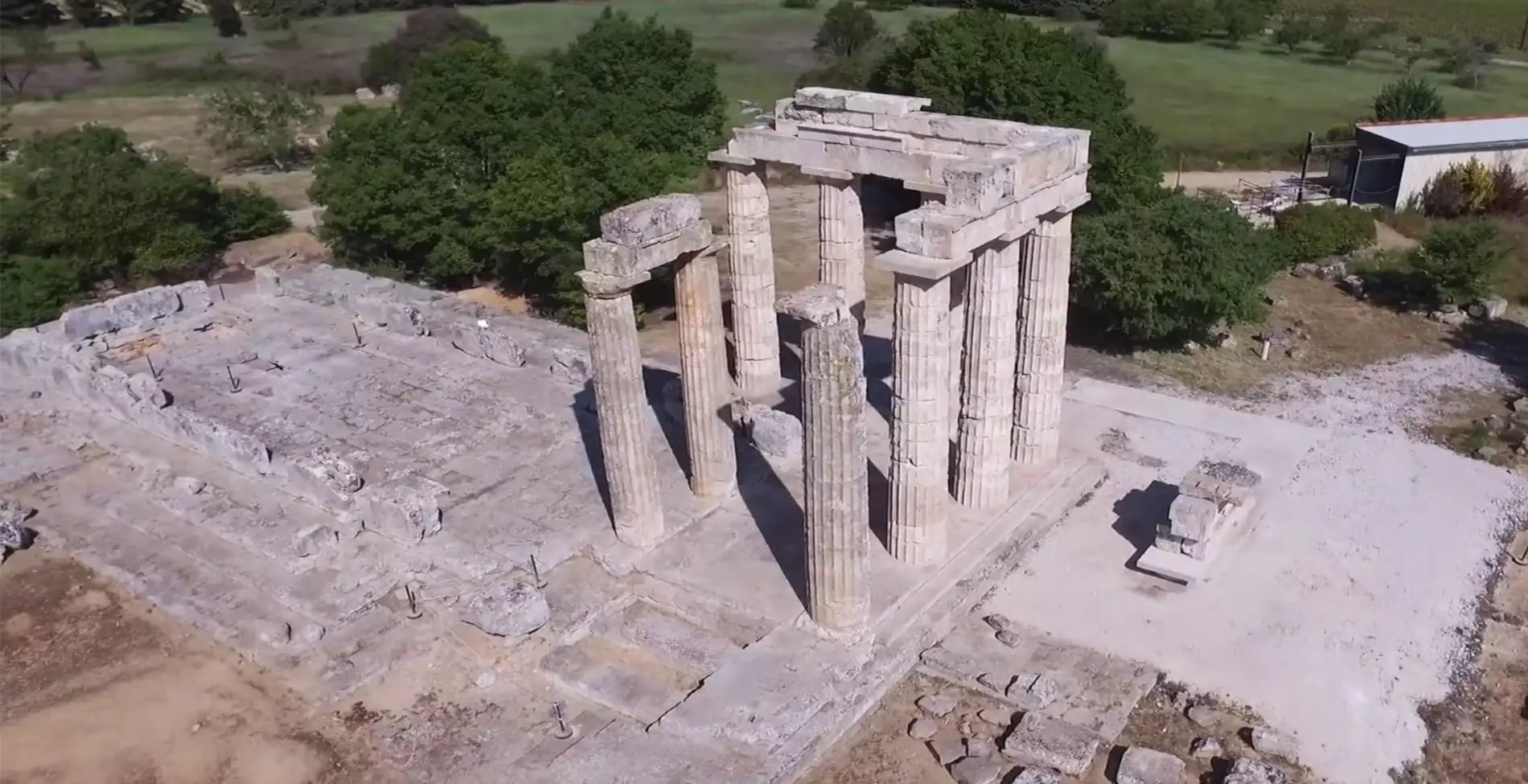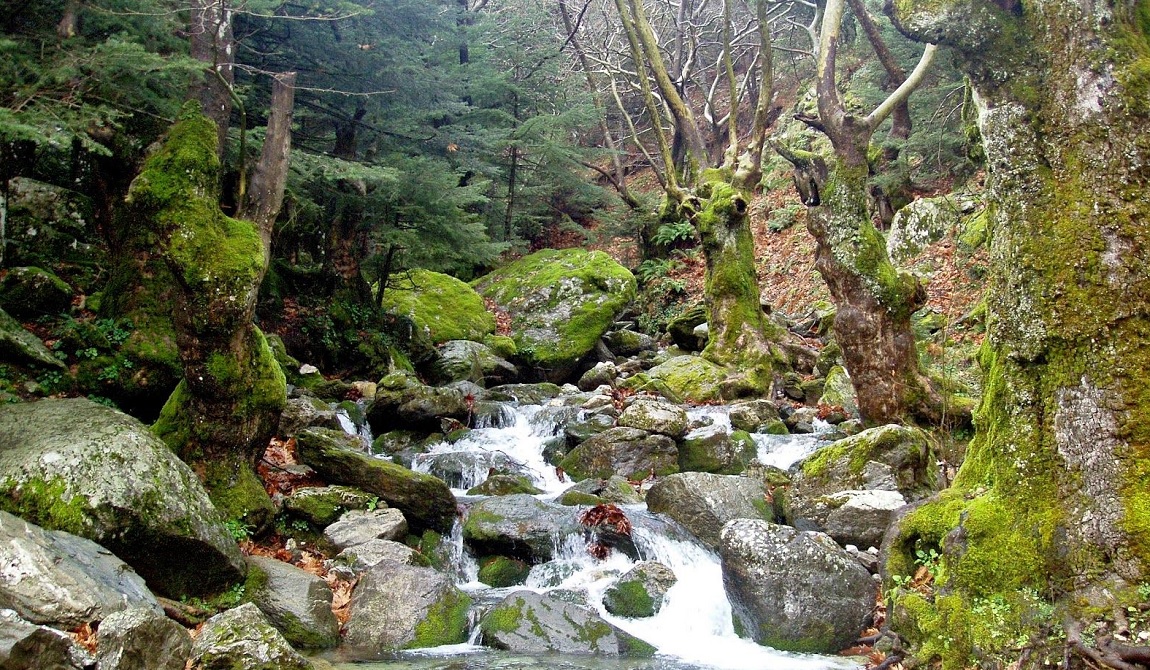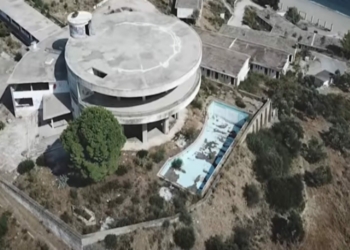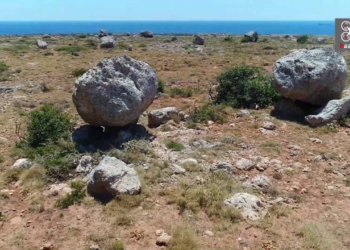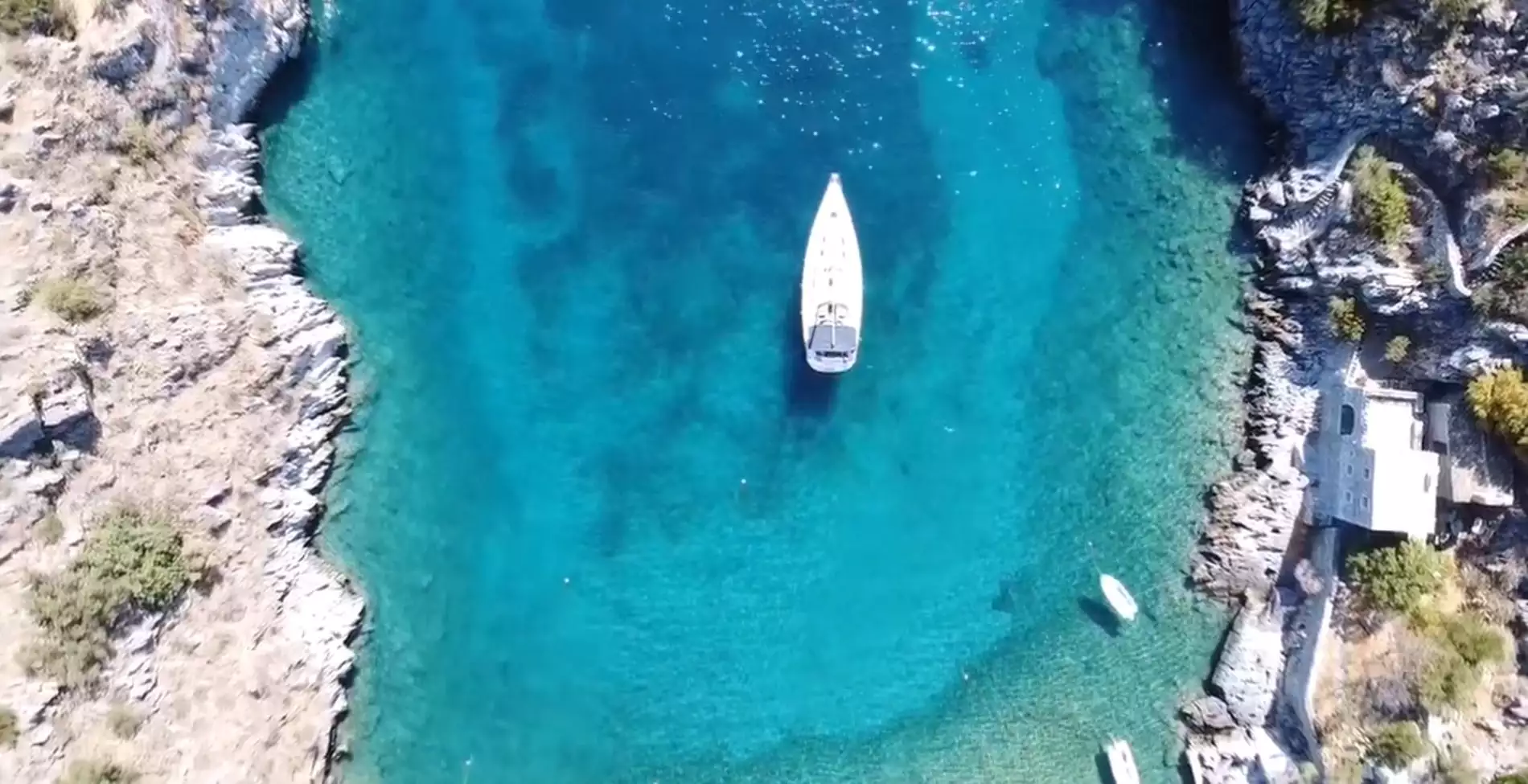A majestic monument awaits you on the east bank of the Evrotas river, about 10 kilometers southeast of Sparta. You are drawn to it by a mysterious force that has been radiating for centuries. You want to get closer and discover its secrets, but you don’t know why. This is the archaeological site of the sanctuary of Menelaus and Helen of Beauty, the legendary king and queen of Sparta. It is also known as “Menelaion” or “Menelaia”, and it is one of the most fascinating attractions for visitors who come to Laconia.
Sanctuary of Menelaus – Helen of Beauty: The throne with the unlimited view
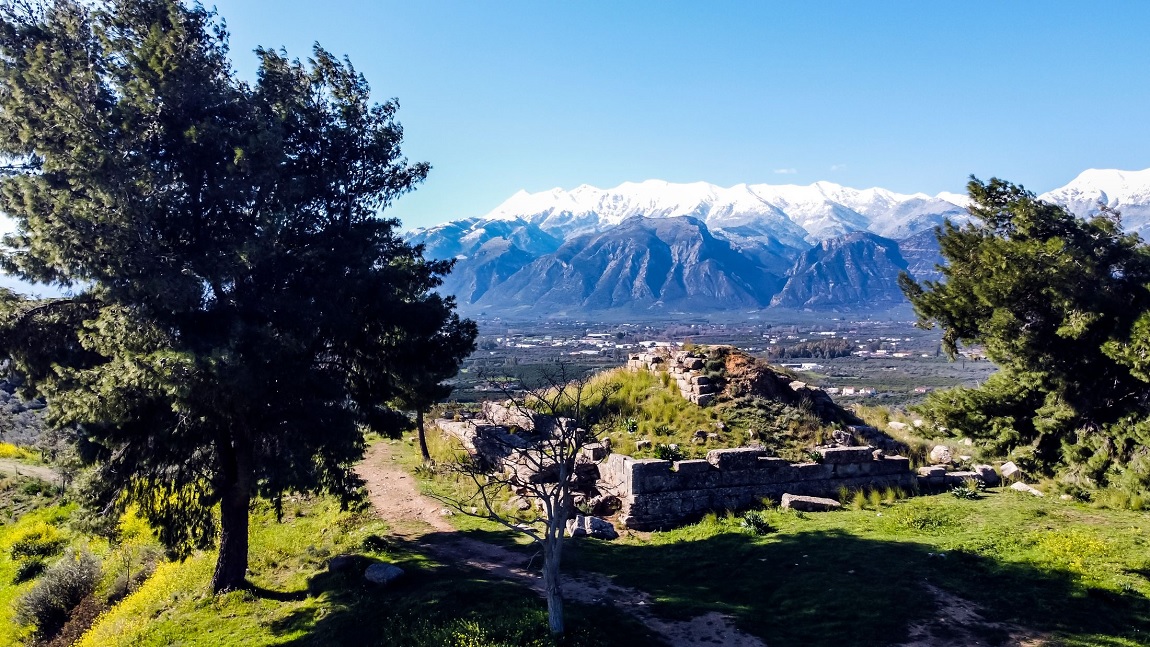
The ancient name of this place was Therapne and you can reach it easily from Sparta. Just follow the road to Afissio (4 km away) and then take a left turn when you see a small sign that says “To the Church of the Transfiguration of the Savior”. The road becomes narrow, steep, and unpaved as you climb up the hill where the archaeological site stands like a pyramid, surrounded by olive trees and wildflowers. It is better to park your car near the church of the Transfiguration of the Savior where there is some space and walk the last half kilometer to the Menelaion.
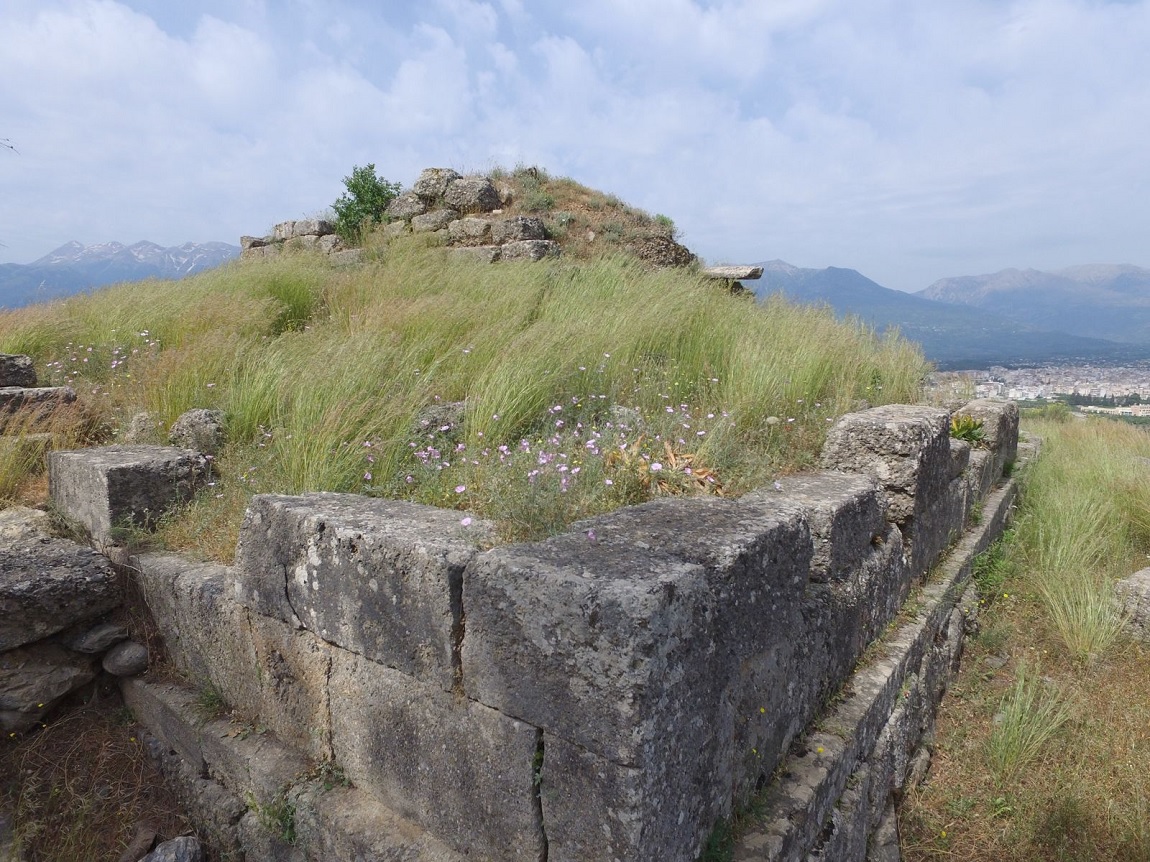
When you get to the top, you have a breathtaking view of the Sparta valley and the majestic Taygetus mountain. You are filled with wonder and peace for the beauty of the place, especially at sunset. The sanctuary, which has an altar and a fence, was built in the 8th century B.C. Over the next centuries, more parts were added to the site and it is believed that statues of Menelaus and Helen of Beauty were placed there. Pausanias wrote that this was the burial place of the couple.
The Myth of Menelaus and Helen of Beauty
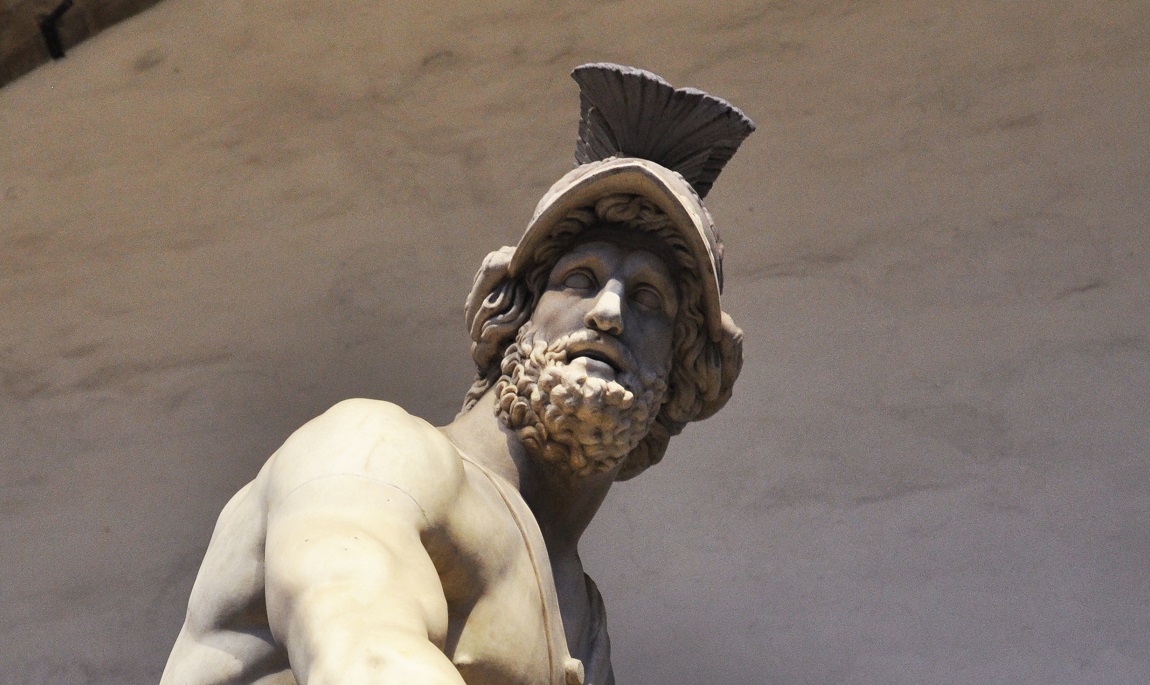
Menelaus was the king of Sparta and the brother of Agamemnon in Greek mythology. He was married to Helen, who was very beautiful and a daughter of Zeus. One day, when Menelaus was away in Crete, a visitor came to his city. He was Paris, the son of the king of Troy. He fell in love with Helen at first sight and took her away to his country with the help of Aphrodite, the goddess of love. When Menelaus came back to Sparta and learned what had happened, he asked his brother and the other kings to help him get Helen back and defend the honor of Greece. He gathered 60 ships for the war against Troy, while many more were provided by the other city-states, forming a huge fleet.
Menelaus fought with Paris in a duel in Troy, but he did not kill him, because Aphrodite, the goddess of love, saved him with her magic. When the Greeks finally conquered the city, Menelaus went to the house where Helen was and pulled her by her hair to the Greek ships. But there is another story that says that Helen hid at the altar of the gods and Menelaus wanted to kill her at first, but then he forgave her with the help of the gods.
A flashback to history
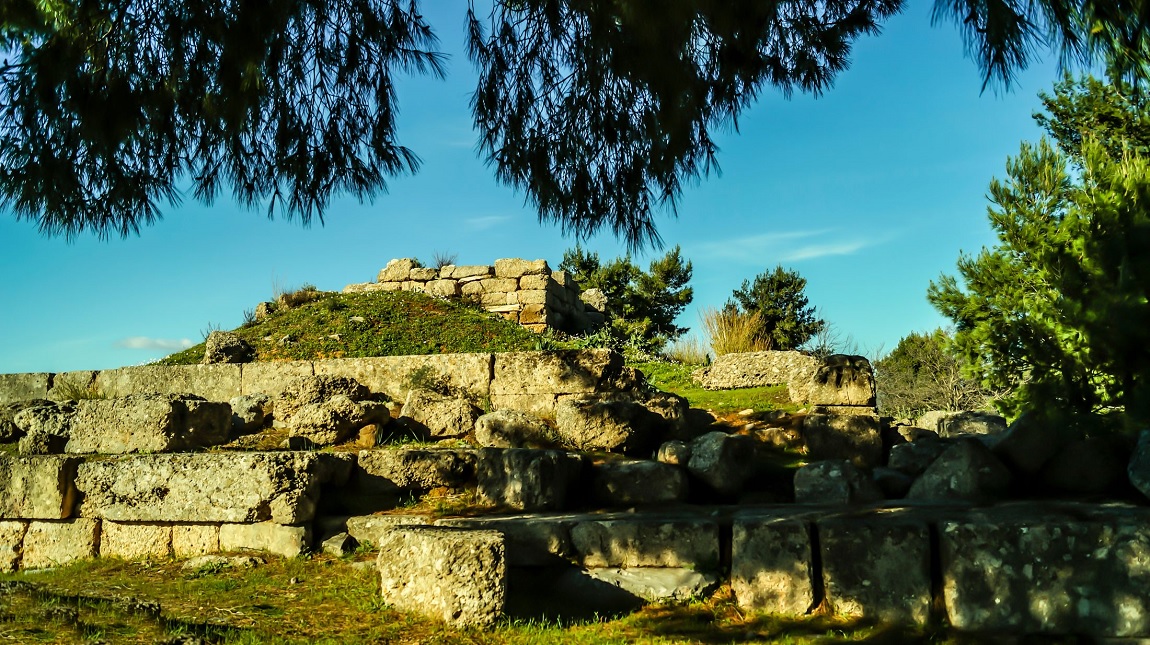
People have been living on this hill since the Middle Bronze Age, around 3,300 BC. This is what the excavations by the British School of Archaeology, led by H. W. Catling, have shown. In the early Mycenaean period, the hill was an important center of power in Mycenaean Laconia. Around the middle of the 15th century BC (Late Bronze Age), a large building with a hall, called “Mansion I” by archaeologist Eleni Zavvou, was built on the hill. But it was soon destroyed and replaced by another big building complex, called “Mansion II”, in the early 14th century BC. This one was also destroyed and partly repaired in the 13th century BC.
The worship of Menelaus and Helen of Beauty started on the hill of Therapne in the 8th century BC and lasted until the Hellenistic period. The first temple for the mythical heroes of Sparta was built on the site around the end of the 7th century BC or the beginning of the 6th century BC, according to archaeologists. In the early 5th century BC, a big platform with a slope on the west side was added to the site, making the sanctuary more impressive.
The excavations on the hill
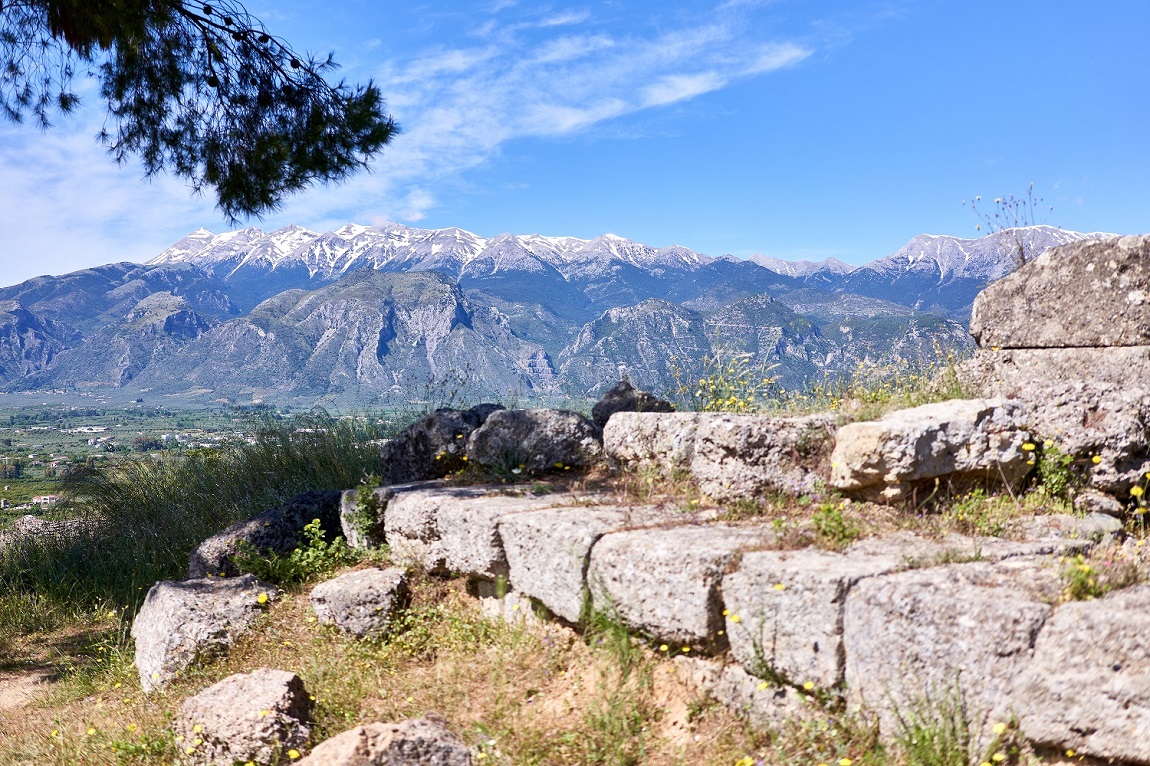
The Menelaion was a place of interest for many scholars. It was identified as a heroon, a shrine for heroes, by Louis Ross, a German Hellenist and the first professor of archaeology at the University of Athens, in 1833. He did a small excavation and found some lead figurines of Laconian style. Heinrich Schliemann, a Greek businessman and an early archaeologist, also visited the site and wanted to do some excavations, but he thought there was nothing from the Mycenaean period there. He was wrong, because in 1899, Christos Tountas, a Greek archaeologist, found some objects from the Mycenaean era with very few resources.
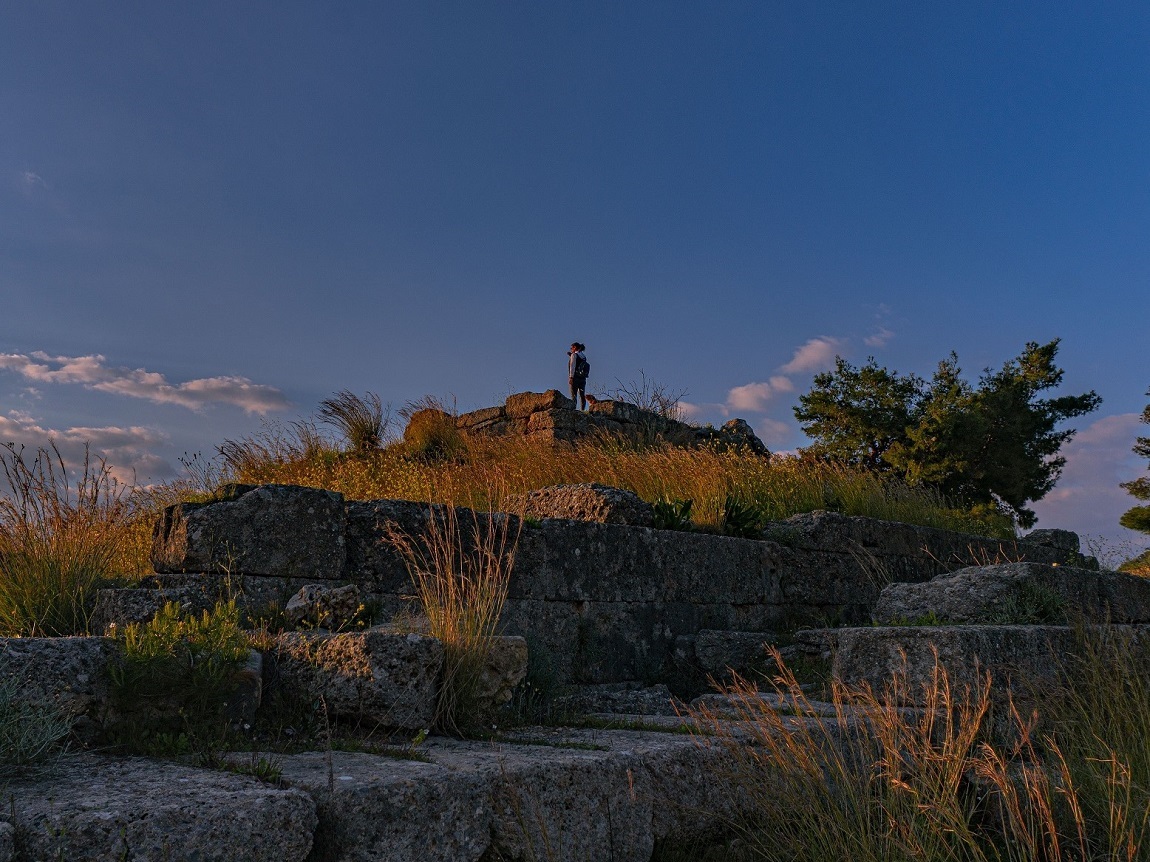
Panagiotis Kastriotis also explored part of the Menelaion in 1899, but the British School of Archaeology at Athens did a systematic excavation in 1909-10. John Percival Drup, Homer Thompson and Alan Weiss were the archaeologists who found part of a Mycenaean building in the northeast of the site. They also fixed and partly restored the walls of the buildings that are still there with concrete.
The Menelaion of Sparta is under the authority of the Ephorate of Antiquities of Laconia and it is open to the public at any time and day of the year, without any fence or gate.
Learn more: realsparta.gr

Travel to Greece – Follow us
Mount Parnon: The charming villages and the covert advice of skilled explorers
Mystras: The impressive castle town, a world heritage site


